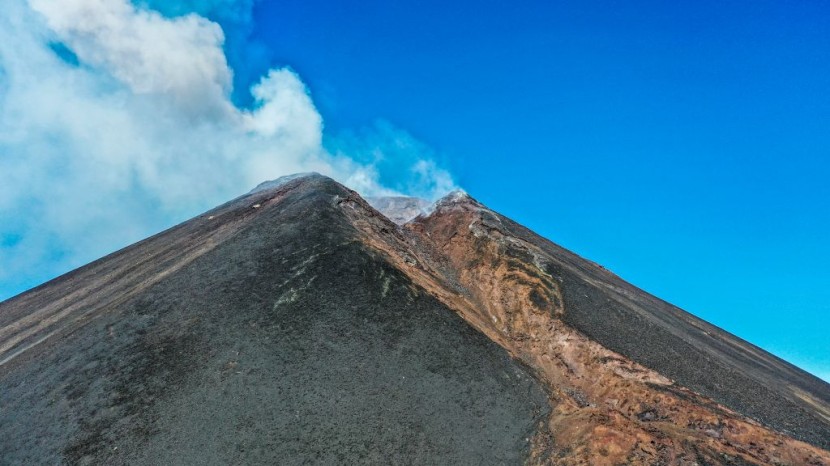
Mount Etna volcano was photographed spewing smoke on March 4, 2021 in Italy's Catania. The volcano Etna produced a spectacular eruption for the ninth time in 17 days.
Mount Etna's Eruption
Mount Etna continued belching smoke and ashes southeast from its crater while emergency authorities oversaw the situation closely in the three villages at the foot of the volcano. It is one of the globe's most active volcanoes.
Sicily's volcano sent such plumes into the air following two weeks of ongoing volcanic activity. Volcano enthusiast Giuseppe Tonzuso captured a Yahoo video on Thursday. The sky turned gray.
The ash plume reached at least 5 kilometers above the volcano's crater. It prevailed into an umbrella cloud that drifted east and spread ash as far away as Messina, reported Volcano Discovery.
Less than 2 days after the earlier lava fountaining episode (also known as paroxysm), the 9th paroxysm was held from the New SE crater of Etna this morning. Initially, it appeared as if the volcano was about to produce the eruption already in the early morning hours, which is around 2 AM local time. Mild to moderate strombolian activity began at the New SE crater and soon became almost continuous.
Mount Etna is a volcano that stands over eastern Sicily. It elicits superlatives; it is Europe's largest volcano, reported Hastings Tribune.
On March 4's early morning, strombolian activity at the Southeast Crater of the volcano slowly increased. This resulted in a paroxysmal event. At around mid-morning, the lava fountain reached a peak of about 500 meters from the Southeast Crater rim.
The continent's most active volcano has been intermittently erupting since the 16th of last month. The Institute of Geophysics and Volcanology (INGV), Italy's national volcanology institute, reported a lava overflow and strombolian activity.
Also Read : Mount Etna Erupts, Shuts Down Italian Airport Only Days After Indonesian Volcano Shot Ash Into Sky (VIDEO)
The location of Mount Etna is Catania, a city along Sicily's coast in proximity to Mount Etna. A lava flow began flowing from the eastern end of the deep fissure cutting through the cone. It gradually traveled eastwards. Simultaneously, volcanic tremors began to rise.
The fiery, noisy show of power Mount Etna displays for days or weeks. It even exhibits this even years every so often, is always remarkable.
The eruptive column composed of ash, gas, and lapilli reached a peak of 12 kilometers. The fallout involved the villages on the northeastern side of the volcano.
The activity slowed down again after about 3:30 AM. It ceased at around dawn. However, it restarted about an hour later. From about 8 AM, the activity again increased. This time, it developed into sustained tall lava fountains from 9:30-10:30 local time.
A tall ash plume rose approximately 4-5 km above the crater. It spread into an umbrella cloud that drifted east and resulted in heavy ashfall in a number of eastern sectors and as far as Messina town.
Catania, alongside a number of other towns and villages, was covered in a layer of lapilli and ash. But Catania airport remained operational. A south-easterly breeze swept the ash cloud over the city.








